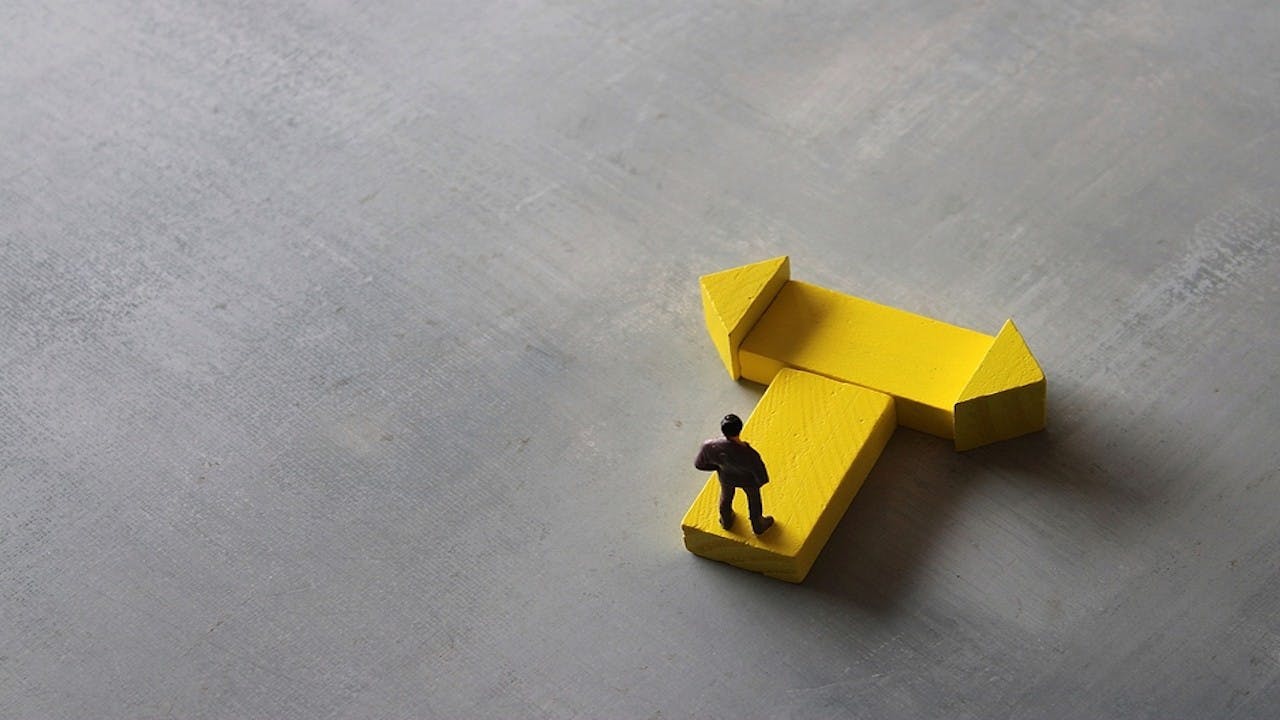It’s staggering to think that data suggests the average human being makes somewhere in the order of 35,000 decisions every single day.
Not all these will be life-shattering ones of course. What to wear, what to eat etc. are hardy life or death decisions. But the point is, how to we know the decisions we make are the best ones we possibly can?
The fact is, sometimes we have too many options. And the problem with having lots of options is that make it can make it more challenging to feel in control of your choices. HRDs are seeing this borne out by interesting statistics that suggest that in the midst of the ‘Great Resignation’, many employees who recently quit are considering returning to their former employer. Did these employees miscalculate when making the decision to leave? Did they not analyze their options thoroughly enough? What new information showed up that caused them to rethink their prior decisions?
Decision making made easy
Whether it’s employees deciding to quit, or their manager making decisions to try and prevent them from quitting, the point is, many of us are now too paralyzed to make important decisions.
So what’s the answer? Ranjay Gulati, author of Deep Purpose: The Heart and Soul of High Performance Companies, suggests better decision making comes understanding our personal purpose. He argues reflection is one of the most valued leadership tools that can help with making better decisions.
The problem with reflecting is that it can often turn into ruminating. So how can HR decision makers prevent this, and begin to make better decisions?
Here are some concrete tips to make reflection work for you when you need to make a decision:
1) Carve out (limited) time
Many of our problems with time management have actually nothing to do with time but rather everything with where we put our energy. And this energy includes our thinking power. It can be exhausting to rethink a choice over and over again, to the point that it steals both our energy and our time. When you notice your mind wandering off to upcoming choices, default to a kinesthetic activity to help pull yourself out of the thinking spiral. For instance, as soon as you notice you’re thinking of what-ifs as you conjure up possible reasons why something would not work, take out a notepad and write down your original thought. Then stop thinking about it and move on to your next task. Circle back to this notepad and set a timer for 15-30 minutes to truly reflect on the choice at hand. Tackle it this time with all your intention, rather than having it remain an uncontrolled ebbing and flowing in the back of your mind.
2) Break it down!
The entire music genre of hip hop was created by replaying the bridge – a section that provides a changeover between two sections in a song – of a soul or funk record. It was the rhythmic, instrumental portion where emcees and break-dancers would break it down. If we consider our efforts of reflecting to be a bridge between our current state and our future desired state, let’s break it down! When you pick up that notepad and spend intentional time analyzing your thoughts and your personal purpose, what are your thoughts telling you? Why are they important now? What can you control as immediate next steps and where do you need to collect more feedback? As you break your thoughts down by asking these guiding questions, be true to yourself. Are you truly answering the questions based on what your compass is, or are you swayed by what is considered the “right answer”? You can’t drink the water you’re swimming in. Often others are better at evaluating who you are. Where possible, leverage your network to gather these insights.
3) Motion does not equal action
Three birds are sitting on a wire. One bird decides to fly away. How many birds are there on the wire? If you answered “three”, then you’ve already heard this analogy. There is a difference between deciding and doing. James Clear poignantly calls out motion as being a form of procrastination in his book Atomic Habits. Just planning to do something doesn’t equate to action. Wanting to make working out a habit or deciding to spend the weekend with your loved ones instead of working does not make it so. We tend to convince ourselves that getting a gym membership, or planning out our meals, or writing down our intentions is helping us get closer to our goals. But the reality is that even though planning is a necessary starting point, staying stuck in planning mode won’t help us get closer to our goals. So, once you’ve written down your thoughts and reflected on what actions you need to take to help pursuit your purpose, take one tiny step the next day. It doesn’t have to be anything noteworthy or large. Tiny steps taken frequently are significant and will go a long way.
4) Progress over perfection
We tend to make ourselves believe that any misstep we make is a personal attack on who we are and what our worth is. It’s not until we’ve moved on from a mistake and we look at it in our rear view mirror that we realize it was actually not that big of a deal. This disproportionate focus on negative emotions of failure, disappointment, or embarrassment before they even happen has us stuck in a bind where perfection is seemingly being pursued but in reality moves further from our reach. The sooner we realize that along the way we’re going to take a wrong exit now and again, the sooner we can let go of our insecurities and start making decisions. The best guaranteed way to not accomplish your goals is to not take any action at all. In the end, perfection is just an illusion.
